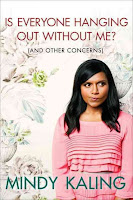Here in Missouri, there are a fair number of book awards that cover pretty much every age of young reader. In the children's department of my library, there are three main state awards:
Building Block Picture Book Awards (read-alouds for preschoolers and other pre-readers);
Show Me Awards (first through third grade); and
Mark Twain Awards (fourth through sixth grades). I use the Building Block nominees pretty heavily in my story times because they really are fantastic books. Lately, though, I've been trying to get up to speed on all of this year's Mark Twain Award nominees. There are twelve finalists in all, and students in grades four, five, and six in the state will choose a winner in the spring. I've read four so far, and they all have really fantastic qualities. Here are my short synopses and thoughts; give one a try!
 Love, Aubrey by Suzanne LaFleur
Love, Aubrey by Suzanne LaFleur -- It's the summer before sixth grade, and Aubrey finds herself all alone at her house in Virginia. Her father and younger sister have recently been killed in a car accident, and her mother, unable to deal with the new family situation, leaves town after seemingly forgetting about Aubrey. Aubrey's grandmother shows up unexpectedly to check in on "her girls," and she immediately goes about making sure Aubrey can recover from everything she's experienced in the past few months. The pair return to the grandmother's house in Vermont, when Aubrey makes a friend, starts to take control of her life again, and ponders what "family" means. This book can be something of a tear-jerker, but the themes and character development really make it a moving read.
 Mudville by Kurtis Scaletta
Mudville by Kurtis Scaletta -- Roy loves baseball, and he'd love nothing more than to play it all the time. Unfortunately for him, though, he lives in Moundville, where it hasn't stopped raining in 22 years; rumor has it that the rain is a curse resulting from an old baseball rivalry between Moundville and the Native Americans who had always lived in the area. Shortly after Roy's dad takes in a foster child, the rain suddenly stops. Roy, a catcher, discovers that his new foster brother, Sturgis, is an amazing pitcher, and Moundville decides to make a baseball team to try to break the rivalry curse. This book is very heavy on baseball talk and facts, but the relationship between the two boys and the towns they come from really balances it out.
 The Brilliant Fall of Gianna Z. by Kate Messner
The Brilliant Fall of Gianna Z. by Kate Messner -- Gianna's favorite part of school is the cross country team, and unfortunately she needs to bring up her science grade if she wants to compete in the next big cross country tournament. That means doing a fantastic job on her leaf project--the project she forgot about until a week before it was due. Try as she might, Gianna just can't seem to make much progress on her project; something is always making it more difficult, be it the school bully, her perfectionist mom, or her beloved grandmother's growing forgetfulness. This book does a great job of showing the various pressures that even grade schoolers face on a daily basis, and it shows Gianna trying to work through family issues while still performing her best at school both on and off the track.
 Million-Dollar Throw by Mike Lupica
Million-Dollar Throw by Mike Lupica -- Nate "Brady" Brodie has always been like a football god at his school. As quarterback, he's always been unstoppable. Until this season, that is. Suddenly Nate finds himself feeling a whole new slew of pressures: his parents' growing financial strain, his best friend's rapidly-failing eyesight, and his chance to win a million bucks at halftime on Thanksgiving Day by completing a pretty tough throw into a 20-inch hole from 30 yards. As Nate's life as he's always known it starts to lose direction, so do his throws. The central question in this book is whether Nate can decide what is really important and focus on that in order to get things back to normal. This football-centric book does a great job of showing the complex dynamics of a family struggling with money, the emotional aspects of a close friend's illness, and figuring out what one can and cannot control.








































